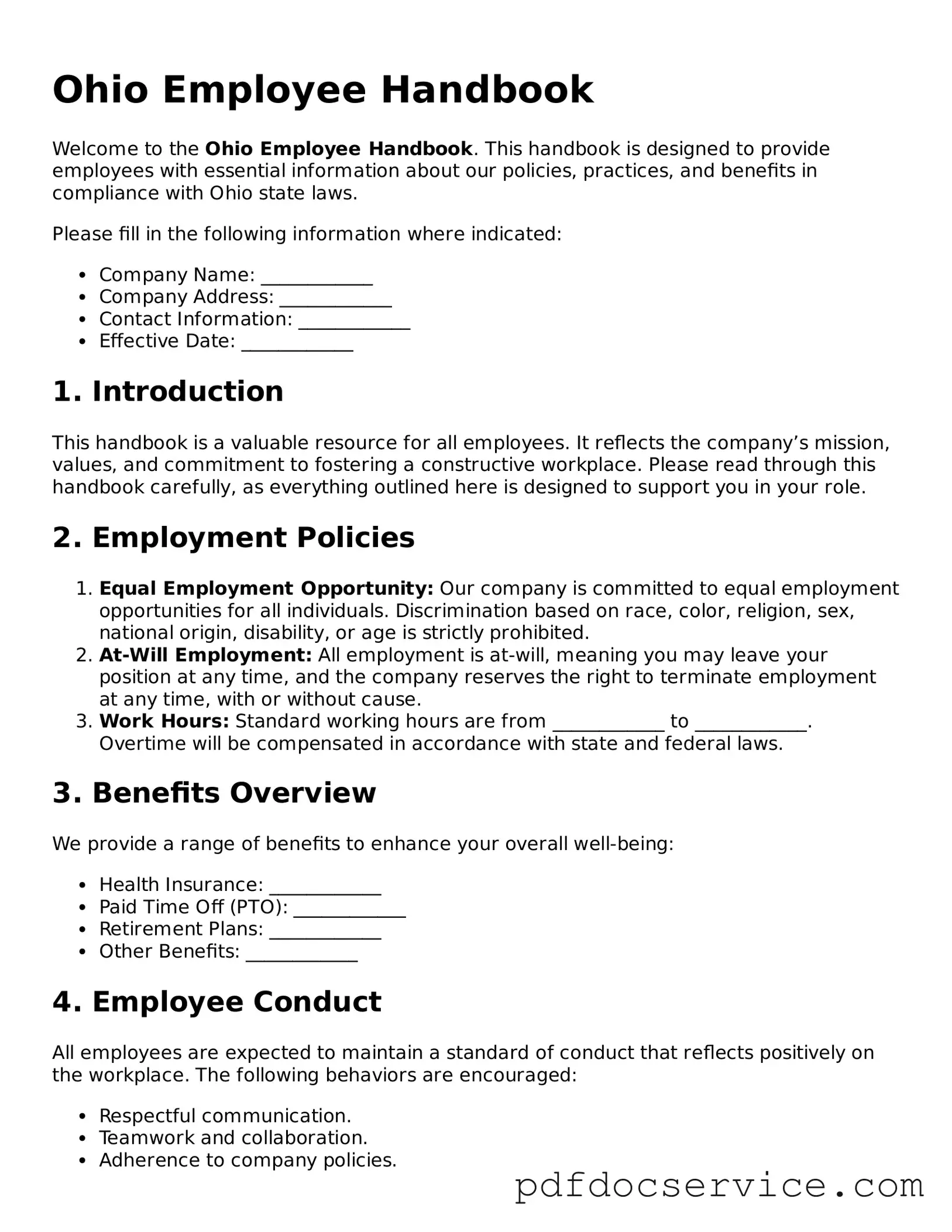What is the purpose of the Ohio Employee Handbook?
The Ohio Employee Handbook serves as a guide for both employers and employees. It outlines company policies, employee rights, and responsibilities. This document helps ensure everyone understands workplace expectations and legal requirements.
Is the Employee Handbook required by law in Ohio?
While Ohio law does not mandate an employee handbook, it is highly recommended. Having a handbook can protect the company from potential legal issues and provide clarity for employees regarding workplace policies.
What should be included in the Employee Handbook?
Key components of an Employee Handbook typically include:
-
Company mission and values
-
Employment policies (e.g., hiring, termination)
-
Workplace conduct and behavior expectations
-
Compensation and benefits information
-
Leave policies (sick leave, vacation, etc.)
-
Health and safety guidelines
-
Disciplinary procedures
How often should the Employee Handbook be updated?
Regular updates are essential to keep the handbook current. It is advisable to review the handbook at least once a year or whenever significant changes occur in laws or company policies.
Can employees suggest changes to the Employee Handbook?
Yes, employees should feel encouraged to provide feedback. Open communication fosters a better work environment. Employers can consider suggestions during the handbook review process.
How should the Employee Handbook be distributed?
The handbook can be distributed in several ways:
-
Printed copies for each employee
-
Digital copies via email or company intranet
-
Access through an employee portal
Ensure that all employees receive a copy and confirm their understanding of its contents.
What should employees do if they have questions about the Employee Handbook?
If employees have questions, they should contact their supervisor or the HR department. Open dialogue is crucial for addressing any uncertainties or concerns regarding the handbook.
Is it necessary for employees to sign an acknowledgment of receipt?
Yes, having employees sign an acknowledgment form is a best practice. This ensures that employees have received the handbook and understand its contents. It can serve as evidence that the company communicated its policies effectively.
Outdated information can lead to misunderstandings and potential legal issues. Regular reviews and updates are vital. If an employee notices discrepancies, they should report them to HR immediately.
What legal protections does the Employee Handbook provide?
The Employee Handbook can provide legal protections by clearly outlining policies and procedures. It can help defend against claims of unfair treatment or discrimination by demonstrating that the company follows established protocols.
